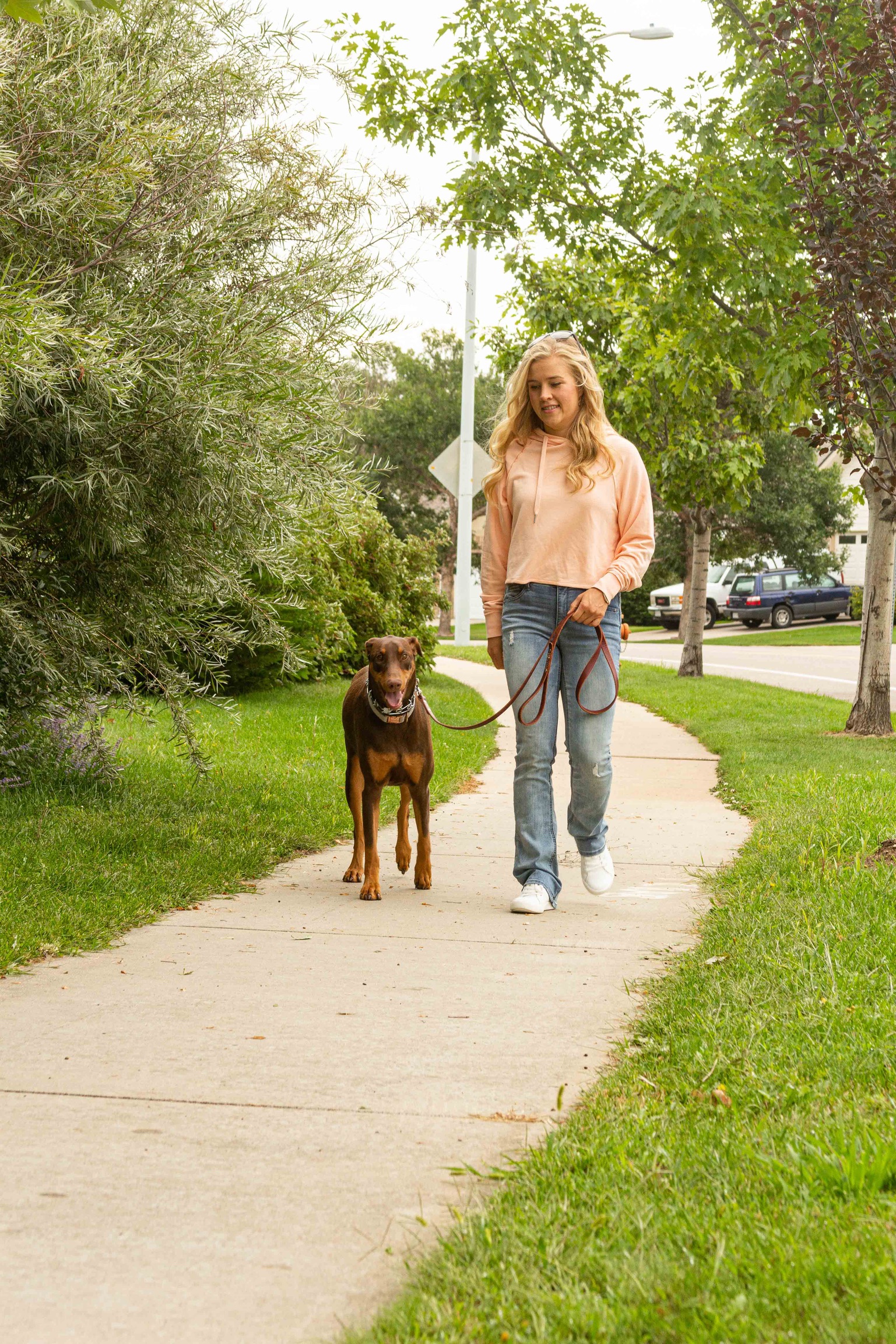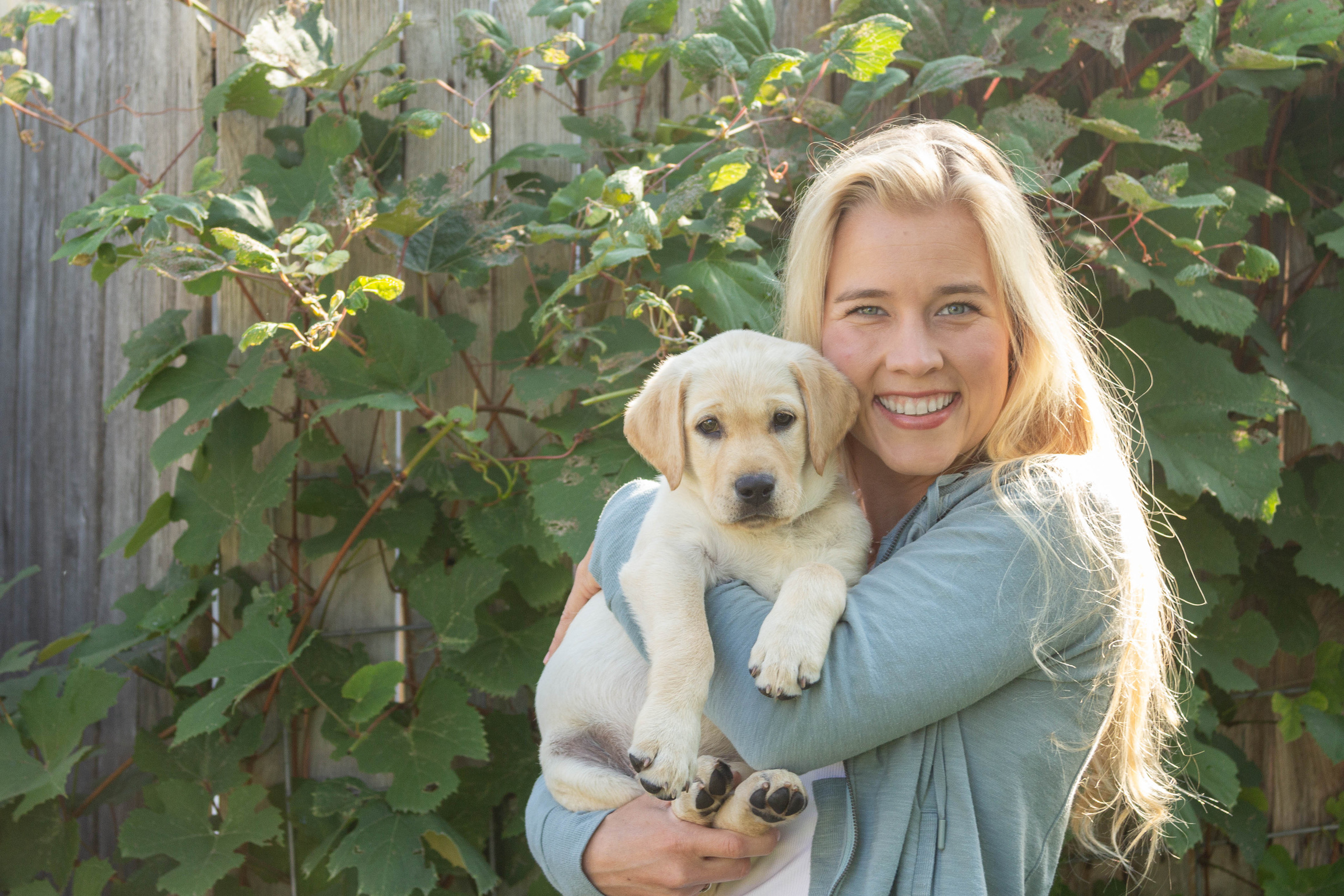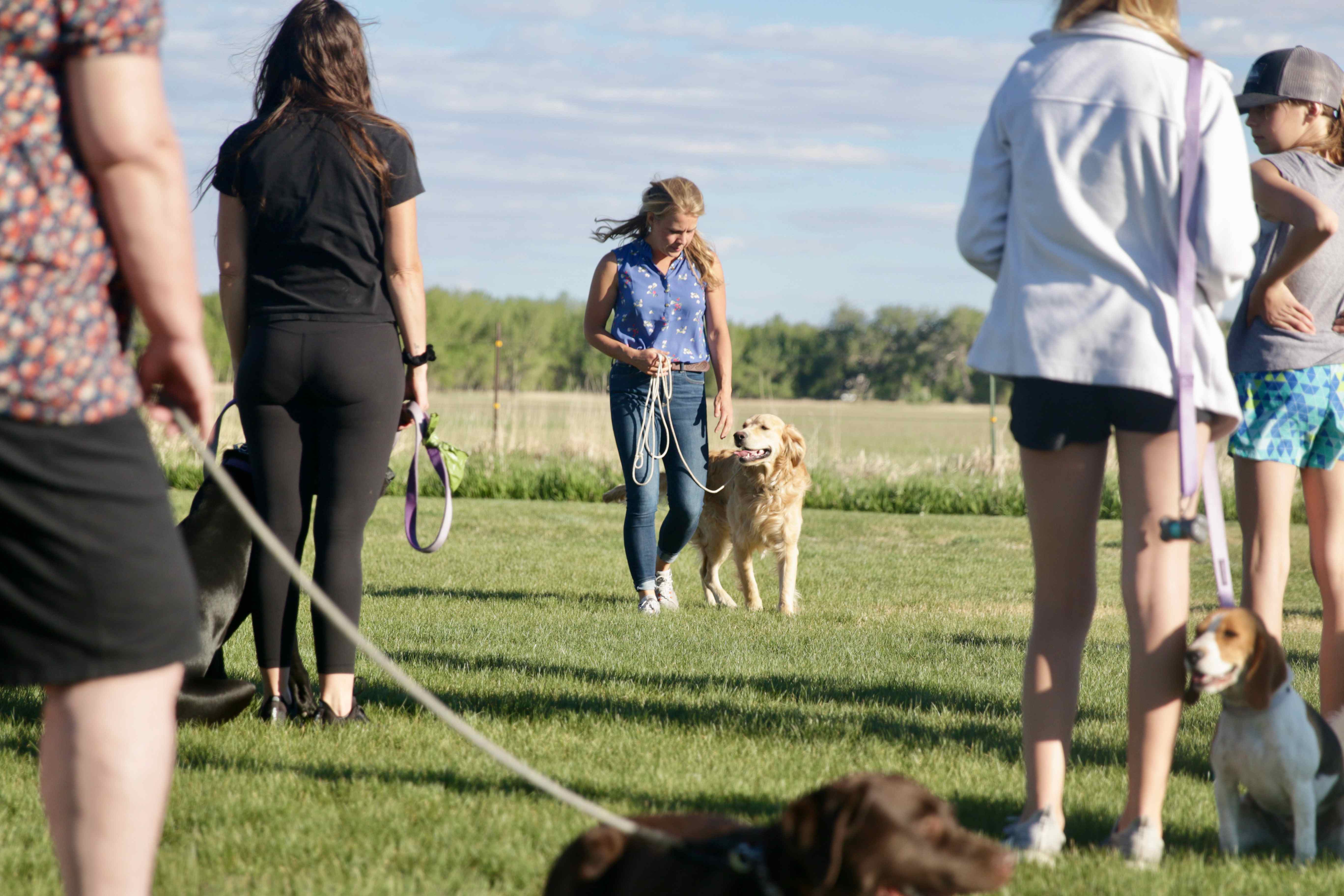
If you're reading this, chances are you've experienced the frustration of being dragged down the sidewalk by your enthusiastic dog. You're not alone. Leash pulling is one of the most common complaints I hear from dog owners in Greeley, Fort Collins, and throughout Northern Colorado.
The good news? With the right techniques and consistency, you can stop your dog from pulling on the leash in just 1-2 weeks. I've helped hundreds of dogs become polite leash walkers, and I'm going to share those exact methods with you today.
Why Do Dogs Pull on the Leash?
Before we dive into solutions, it's important to understand why dogs pull in the first place. Understanding the behavior helps us address it more effectively.
Dogs pull because it works. When your dog pulls forward and you follow, they learn that pulling gets them where they want to go faster. It's simple cause and effect from your dog's perspective.
Other common reasons include:
- Excitement: Your dog is thrilled to be outside exploring their environment
- Natural pace: Dogs naturally walk faster than humans
- Interesting smells: That squirrel scent or fire hydrant is just too tempting
- Lack of training: No one taught them that loose-leash walking is expected
- Insufficient exercise: Pent-up energy makes self-control harder
The solution isn't to fight against these natural instincts but to teach your dog that walking calmly beside you is more rewarding than pulling.
The Foundation: Understanding Loose Leash Walking
Loose leash walking means your dog walks beside you with slack in the leash. The leash forms a gentle "J" shape rather than being taut. Your dog can walk slightly ahead, beside, or slightly behind you, as long as there's no tension on the leash.
This is different from "heel," which is a formal obedience position where the dog walks precisely at your left side. For everyday walks around Greeley's neighborhoods and trails, loose leash walking is usually sufficient.
The Stop-and-Start Method: Your Primary Training Tool
This is the most effective technique for teaching loose leash walking, and it's the foundation of what I teach in my group classes throughout Northern Colorado.
How It Works:
- Start walking with your dog on a standard 6-foot leash
- The moment the leash becomes tight, immediately stop walking
- Stand completely still like a tree. Don't say anything, don't pull back, just stop
- Wait until your dog releases the tension on the leash (they might turn back to look at you, take a step back, or simply stop pulling)
- The instant the leash goes slack, praise your dog and start walking again
- Repeat this process every single time the leash gets tight
Yes, this means your first few walks will be slow. You might only make it to the end of your driveway. That's okay! You're teaching your dog a crucial lesson: pulling stops all forward progress, but a loose leash keeps us moving.
"The first day we tried this method with our Lab, Copper, we barely made it around the block in 20 minutes. By day 5, he was walking beautifully on a loose leash for our entire 30-minute walk. It was like having a different dog!" - Mike R., Greeley
The Direction Change Method
This technique works wonderfully in combination with the stop-and-start method, especially for dogs who need a bit more engagement during walks.
How to Do It:
- When your dog starts to pull, turn and walk in the opposite direction
- Don't yank or pull your dog back; simply turn and walk away
- Use a cheerful voice to encourage your dog to follow you
- When they catch up and the leash is loose, praise them and continue
- You can change directions multiple times during a walk
This method teaches your dog to pay attention to you and check in regularly, rather than assuming you'll always follow wherever they want to go.
The Right Equipment Makes a Difference
While training technique is most important, having the right equipment can make the process easier, especially for strong dogs or during Colorado's icy winter conditions.
Recommended Equipment:
- Standard 6-foot leash: Provides good control and clear communication. Avoid retractable leashes for training
- Front-clip harness: Reduces pulling power and makes training easier. The leash clips at the chest, not the back
- Martingale collar: A gentle option that prevents dogs from slipping out without choking
- Treat pouch: Makes rewarding good behavior quick and easy
What to Avoid: Retractable leashes teach pulling (the dog learns that pulling gives them more leash), and choke chains or prong collars can cause injury and anxiety.
The Reward System: Making Good Behavior Worth It
Dogs repeat behaviors that are rewarding. We need to make walking nicely beside you more rewarding than pulling toward that interesting smell.
Effective Rewards:
- High-value treats: Small pieces of chicken, cheese, or commercial training treats
- Verbal praise: Enthusiastic "good dog!" in a happy voice
- Permission to sniff: After walking nicely for 10-20 steps, say "go sniff" and let them explore a spot
- Forward progress: Getting to keep moving is itself rewarding
Reward your dog frequently at first—every few steps they walk without pulling. As they improve, gradually increase the distance between rewards.
Practice in Low-Distraction Environments First
Don't start your training on the busy sidewalks of downtown Greeley or at a crowded dog park. Set yourself up for success by practicing in easier environments first.
Progression Plan:
- Your driveway or backyard (minimal distractions)
- Quiet residential streets (some distractions but manageable)
- Busier neighborhood walks (more dogs, people, and activity)
- Nature trails and parks (high distractions but worth the work)
Each level should be mastered before moving to the next. If your dog struggles at a new level, go back to the previous one for more practice.
Common Mistakes That Sabotage Your Training
Even with the best techniques, these common mistakes can slow down your progress:
1. Inconsistency
Allowing pulling sometimes but not others confuses your dog. Every family member needs to follow the same rules. If Grandma lets the dog pull but you don't, the training will take much longer.
2. Getting Impatient
Training takes time. If you get frustrated and start pulling back on the leash or giving up on your techniques, you're teaching your dog that if they just wait you out, they'll get what they want.
3. Using the Leash to Steer
Constantly pulling your dog back into position doesn't teach them anything. They need to choose to walk beside you, not be physically forced there.
4. Not Exercising Before Training
A dog with pent-up energy will struggle with impulse control. Give your dog some play time or let them run in your yard before practicing leash training.
5. Training Only on "Real" Walks
Dedicate some short sessions purely for training rather than expecting perfection on every walk. This takes pressure off both you and your dog.
Special Considerations for Northern Colorado
Living in Greeley and surrounding areas presents unique challenges for leash training:
Winter Weather
Ice and snow make it harder to stop suddenly. Consider using ice melt for yourself and paw protection for your dog. Practice more indoors during harsh weather using hallways or your garage.
Wildlife Encounters
Prairie dogs, rabbits, and other wildlife are common distractions. Practice your "leave it" command separately, then incorporate it into your leash training.
Trail Etiquette
Popular trails like Poudre River Trail or Homestead Trail require good leash manners. Practice in quieter areas first before tackling busy trails.
Troubleshooting Specific Problems
My Dog Lunges at Other Dogs
This is reactivity, not just pulling. Create more distance between your dog and the trigger, work on focus exercises, and consider professional training. Our private training sessions can address this specific issue.
My Dog Pulls Only at the Start of Walks
This is excitement-based pulling. Let your dog burn off some energy in your yard first, or practice the stop-and-start method right from your front door. Don't let them out the door until they're calm.
My Dog Pulls Toward Every Single Smell
Build in "sniff breaks" where you give permission to explore. This makes the controlled walking portions feel more fair to your dog. Try a pattern: 20 steps of loose leash walking, then 30 seconds of sniffing time.
My Dog Pulls Only on the Way Home
Your dog has learned that pulling toward home works. Apply the stop-and-start method even more consistently on the return trip.
How Long Will This Take?
With consistent practice, most dogs show significant improvement in 1-2 weeks. However, several factors affect the timeline:
- Your consistency: Training every single walk accelerates progress
- Your dog's age: Puppies learn faster than dogs with years of pulling practice
- Your dog's temperament: Some dogs are naturally more focused and biddable
- Distractions in your environment: Quieter areas make training easier
- Previous training history: Dogs with basic obedience training often pick this up faster
Remember: Every walk is a training session. There are no "off days" where pulling is okay, or you'll confuse your dog and slow progress.
Advanced Tips for Perfect Leash Walking
Once your dog has mastered basic loose leash walking, try these advanced techniques:
Variable Pace Walking
Randomly speed up or slow down during walks. This teaches your dog to pay constant attention to your pace rather than zoning out.
Automatic Check-Ins
Reward your dog whenever they look up at you voluntarily during a walk. This builds the habit of checking in without being prompted.
Obstacle Course Walks
Walk around trees, benches, or other objects in patterns. This adds mental stimulation and reinforces your dog's focus on you.
When to Seek Professional Help
While most dogs can learn loose leash walking with these techniques, some situations benefit from professional guidance:
- Your dog is aggressive or reactive toward other dogs or people
- You've been trying consistently for 4+ weeks with no improvement
- Your dog is too strong for you to safely control
- You're feeling overwhelmed or frustrated
- Your dog has anxiety or fear issues that complicate training
Our private training sessions can address your specific challenges with personalized guidance. We also offer our popular online leash training course that you can work through at your own pace.
Your Action Plan for This Week
Ready to start? Here's your week-by-week training plan:
Week 1: Foundation
- Practice stop-and-start in your driveway for 10 minutes daily
- Short 5-10 minute training walks in quiet areas
- Reward every 3-5 steps of loose leash walking
- Don't worry about distance; focus on quality
Week 2: Building Duration
- Extend training walks to 15-20 minutes
- Practice in slightly busier areas
- Reduce reward frequency to every 10-15 steps
- Add direction changes to keep your dog engaged
Week 3+: Generalizing the Behavior
- Practice in different locations around Greeley
- Gradually increase distractions
- Continue to reward good behavior intermittently
- Remember that new environments may require more frequent rewards initially
Final Thoughts: The Walk Your Dog Deserves
Walks should be enjoyable for both you and your dog. When your dog pulls constantly, walks become a chore instead of a bonding experience. By investing time in training now, you're giving both of you the gift of stress-free walks for years to come.
Remember these key points:
- Consistency is everything—train on every single walk
- Stop immediately when the leash gets tight
- Reward loose leash walking frequently
- Practice in low-distraction environments first
- Be patient with your dog and yourself
The dogs I work with in Greeley typically see dramatic improvements within 1-2 weeks when their owners commit to consistent training. You can absolutely achieve the same results.
"After struggling with leash pulling for two years, I finally tried Alli's techniques. Within 10 days, our walks went from stressful to actually enjoyable. I can't believe we waited so long to address this!" - Jennifer K., Fort Collins
Ready for More Help?
If you want structured guidance and professional support, check out these resources:
- Online Leash Training Course: 78 minutes of video instruction you can reference anytime ($60)
- Group Training Classes: 9-week program covering leash walking and all basic obedience ($450)
- Private Training: One-on-one sessions customized to your specific challenges ($100/session)
You don't have to figure this out alone. Whether you choose our online course, join group classes in Greeley, or work with me privately, I'm here to help you and your dog succeed.
Contact us today to discuss which option is right for you and your dog. Together, we'll transform those frustrating pulls into peaceful walks around Northern Colorado's beautiful neighborhoods and trails.
Happy training, and enjoy those walks!

